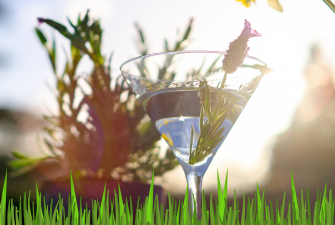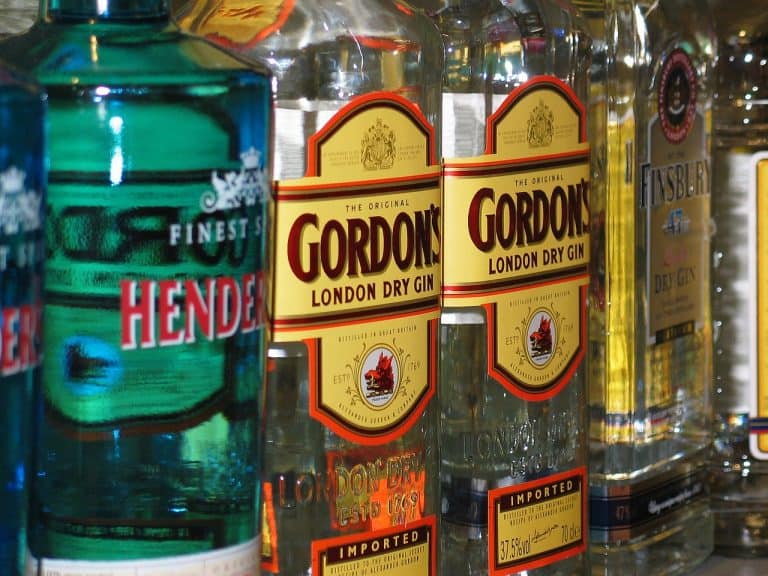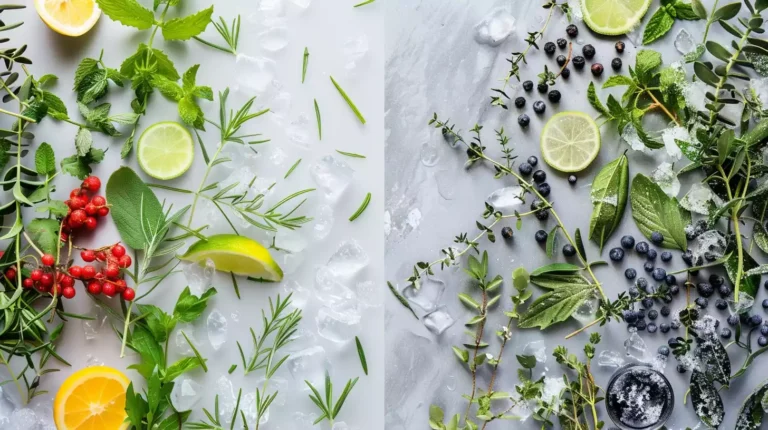What Is Extra Dry Gin? History and Production Explained
When it comes to extra dry gin, the level of dryness is so pronounced that it might just redefine your gin-drinking experience. The intriguing balance of botanicals and the unparalleled crispness of this spirit create a tantalizing allure that keeps you coming back for more.
But what exactly differentiates it from other gin varieties? Let’s reveal the mysteries behind the allure of extra dry gin, from its origins to its serving suggestions, and discover why it has become a staple in the world of mixology.
Continue Reading to Understand These Key Points:
- Extra Dry Gin is known for its botanical-forward flavor, minimal sweetness, and higher alcohol content.
- It is crafted through multiple distillations, meticulous techniques, and aromatic infusion for a crisp taste.
- Versatile in mixology, it pairs well with citrusy flavors, herbs, and edible garnishes.
- Extra Dry Gin is a staple in classic cocktails like Martinis, offering invigorating and aromatic qualities.
Origins of Extra Dry Gin
The origins of Extra Dry Gin trace back to the early 20th century when Seagrams Extra Dry Gin emerged as a response to the surging demand for drier spirits in the gin market.
This shift marked a pivotal moment in gin history, catering to evolving consumer preferences for less sweetness in their drinks. Seagrams Extra Dry Gin quickly gained popularity for its crisp and clean taste, becoming a staple for everyday occasions and classic cocktails.
Seagrams Extra Dry Gin’s distinct character, characterized by a subtle sweetness and a focus on botanicals like juniper, coriander, citrus peels, and angelica root, sets it apart from other gin styles.
Its balanced flavor profile makes it a versatile spirit that can be enjoyed neat or as a base for a myriad of cocktails. Whether sipped on its own or mixed into a Martini, Seagrams Extra Dry Gin continues to be a go-to choice for gin enthusiasts seeking a timeless and sophisticated drinking experience.
Distillation Process
During the distillation process of extra dry gin, careful attention is paid to removing impurities and enhancing botanical flavors to achieve a clean and crisp taste profile. This meticulous process involves a series of distillation techniques and flavor extraction methods to guarantee the highest quality product.
- Purity Levels: The distillation process for extra dry gin includes multiple distillations, which are essential for achieving high purity levels. By carefully controlling the distillation process, distillers can eliminate impurities and unwanted compounds, resulting in a purer and clearer spirit.
- Aromatic Infusion: Extra dry gin is renowned for its botanical-forward flavor profile. During the distillation process, juniper berries and other botanicals are used to infuse the spirit with complex aromas and flavors. This aromatic infusion is important for creating the distinctive taste of extra dry gin.
- Taste Refinement: Through a meticulous production process, the flavors of extra dry gin are refined to create a harmonious and balanced taste profile. Distillers carefully monitor the distillation stages to ensure that the final product delivers a clean, crisp, and invigorating taste that’s characteristic of extra dry gin.
Key Botanicals Used
When crafting Extra Dry Gin, key botanicals play a vital role in shaping the spirit’s flavor profile. Juniper berries, coriander seeds, citrus peels, angelica root, and orris root are commonly used botanicals that contribute to a harmonious blend of herbal, citrusy, and earthy notes.
Understanding the distinct characteristics of each botanical is essential in achieving the traditional and balanced taste expected from Extra Dry Gin.
Essential Botanical Ingredients
In crafting extra dry gin, essential botanical ingredients, including juniper berries, coriander seeds, angelica root, citrus peels, and orris root, play a crucial role in defining its distinct flavor profile.
These botanicals are carefully selected for their unique characteristics, contributing to the overall flavor complexity of the spirit.
To highlight the importance of botanicals:
- They provide a diverse range of flavors, from the resinous and piney notes of juniper to the bright and zesty citrus hints from citrus peels.
- The infusion techniques used during distillation help extract the essence of each botanical, ensuring a harmonious blend of flavors.
- Botanical substitutions can alter the taste profile, offering opportunities for experimentation in creating new cocktail recipes and flavor pairings.
Distinctive Flavor Profiles
Key botanicals play a pivotal role in shaping the distinctive flavor profiles of extra dry gin. Juniper berries, coriander seeds, and citrus peels are prominent contributors.
Juniper berries provide the classic piney and resinous notes fundamental to gin, while coriander seeds add a citrusy, spicy complexity. Citrus peels, such as lemon or orange, introduce bright, zesty flavors that enhance the overall freshness of the spirit.
These botanicals work synergistically to create a harmonious blend of flavor nuances and aromatic notes in extra dry gin. When crafting cocktails, mixologists often highlight these botanical-driven tastes by pairing the gin with ingredients that complement and enhance its botanical profile.
Tasting notes commonly include crisp juniper, citrus undertones, and a hint of spice in well-balanced flavor pairings.
Traditional Distillation Methods
Moving from the discussion on distinctive flavor profiles in extra dry gin, the traditional distillation methods for this spirit center around the meticulous use of key botanicals, with juniper berries holding a central role in shaping its unique character.
Key Botanicals Used in Extra Dry Gin Distillation:
- Juniper Berries: Primary botanical that imparts the signature piney and resinous flavors to extra dry gin.
- Coriander: Adds citrusy and spicy notes to the gin, complementing the juniper.
- Angelica Root: Contributes earthy and herbal undertones, enhancing the complexity of the spirit.
These traditional techniques have historical significance, with modern innovations continuing to build upon the foundations laid by these key botanicals to create the well-balanced, juniper-forward profile characteristic of extra dry gin.
Alcohol Content Variations
With alcohol content typically ranging from 40-47% ABV, extra dry gin distinguishes itself for its higher proof compared to other gin varieties. This higher alcohol by volume (ABV) lends extra dry gin its characteristic robustness and intensity.
The table below highlights the ABV ranges and flavor profiles of extra dry gin:
| ABV Range | Flavor Profile |
|---|---|
| 40% | Citrus, Juniper |
| 43% | Floral, Spicy |
| 47% | Herbaceous, Robust |
Extra dry gin’s distinctive distillation methods and botanical blends contribute to its diverse flavor spectrum. The higher ABV allows for a more concentrated extraction of flavors from the botanicals used, resulting in a clean, crisp taste with a pronounced emphasis on botanical essences.
When mixing cocktails, it’s essential account for the gin’s alcohol content in order achieve a balanced drink. Experimenting with different ABV variations can lead to unique cocktail creations that highlight the gin’s complexity.
Notable Brands and Labels
Notable within the sphere of extra dry gin brands is the well-regarded Seagram’s Extra Dry Gin, celebrated for its exceptional quality and crisp flavor profile.
- Seagram’s Extra Dry Gin is meticulously crafted with a delicate blend of botanicals, resulting in a harmonious flavor profile that balances traditional juniper notes with hints of citrus and spice. This careful selection of botanicals contributes to the gin’s distinct taste and sets it apart from other brands in the market.
- Renowned for its versatility, Seagram’s Extra Dry Gin is a preferred choice for mixologists and cocktail enthusiasts. Its smooth finish makes it an ideal base for a wide range of cocktail creations, from classic martinis to innovative mixed drinks that highlight its botanical complexity.
- When appreciating Seagram’s Extra Dry Gin, one can expect a well-rounded spirit with tasting notes that include a crispness, a subtle herbal undertone, and a clean, lingering finish. These characteristics make it a favorite among gin connoisseurs who value quality and craftsmanship in their spirits.
Serving Suggestions and Pairings
When exploring serving suggestions and pairings for extra dry gin, consider its minimal sweetness and botanical-forward flavor profile, making it a versatile choice for a wide array of cocktails.
Extra dry gin’s crisp and clean taste, along with its higher alcohol content, make it a favorite among bartenders for crafting classic and innovative drinks.
For cocktail creations, experiment with flavor combinations that complement the gin’s botanical notes, such as citrusy lemon or grapefruit, and herbal hints like thyme or rosemary. These ingredients can enhance the complexity of the gin while balancing its dryness.
When garnishing extra dry gin cocktails, options like lemon twists, fresh herbs, or even edible flowers can elevate both the visual appeal and aromatic experience.
Mixology techniques like stirring or shaking can influence the texture and temperature of the drink, enhancing the overall drinking experience.
Understanding the tasting notes and flavor profiles of extra dry gin can guide you in creating well-balanced and delightful cocktails that showcase the spirit’s unique characteristics.
Popularity and Global Appeal
Extra dry gin stands as a highly sought-after spirit choice globally, revered for its crisp and clean flavor profile. Its popularity and global appeal can be attributed to several key factors:
- Flavor Profiles: Extra dry gin is prized for its dryness, which refers to its minimal sweetness compared to other gin varieties. This lack of sweetness allows the botanicals and juniper to shine through, giving it an invigorating and aromatic quality that appeals to a wide range of palates.
- Cocktail Recipes: Extra dry gin is a staple ingredient in classic cocktails such as Martinis and Gin and Tonics. Its versatility and balanced botanical blend make it an ideal base spirit for a variety of cocktail recipes, from traditional classics to modern mixology creations.
- Mixology Techniques: Bartenders and mixologists appreciate extra dry gin for its ability to blend harmoniously with other ingredients. Its clean and crisp profile allows mixologists to experiment with different flavors and techniques, resulting in innovative and delicious cocktails that showcase the spirit’s unique characteristics.
Final Thoughts
So… extra dry gin is like a symphony of botanicals and alcohol, harmonizing in a crisp and clean taste that’s unparalleled. Its versatility in cocktails and its smooth finish make it a favorite among gin enthusiasts worldwide.
Like a well-crafted cocktail, Extra Dry Gin is a blend of flavors that dance on the palate, leaving a lasting impression of sophistication and refinement.






